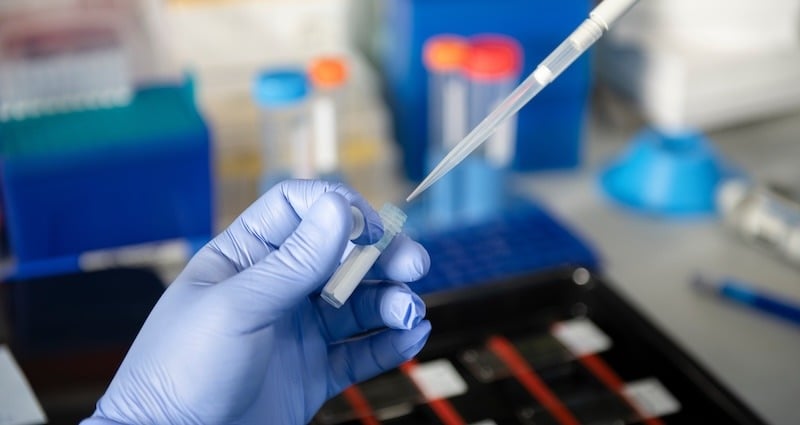
A wide range of factors can contribute to gastrointestinal problems, including foodborne illnesses and other diarrhea-causing infections. Fecal swabs are a critical sample collection tool for gathering information about the bacterial source of the problem to aid in diagnosis. However, getting the best diagnostic information depends first upon using the right materials for sample collection and transport.
What is a fecal swab?
A fecal swab sample may either be a rectal swab sample or a stool swab sample. Both sample types are preserved in a vial of medium and transported to a laboratory for testing that will help clinicians in the diagnosis of a range of gastrointestinal bacterial infections.
What are the various uses of a fecal swab (a.k.a. stool swab)?
Stool swabs are a crucial tool in medical diagnostics, primarily used to collect fecal samples for the detection and analysis of gastrointestinal diseases, infections, and other conditions affecting the digestive tract. These swabs are designed to capture and preserve microbial content, such as bacteria, viruses, parasites, and fungi, which can indicate the presence of conditions like Salmonella, Clostridium difficile, norovirus, and other pathogenic organisms.
In addition to identifying infectious agents, stool swabs are also used in the assessment of gut health, including tests for digestive function, the balance of gut flora, and in some cases, to screen for colorectal cancer markers. The ease of use and non-invasive nature of stool swabs make them an effective option for patients of all ages, particularly when quick and sanitary sample collection is required. The samples obtained can be used for a variety of tests, including culture techniques, antigen testing, and molecular diagnostics, providing valuable information for diagnosis, treatment planning, and monitoring of gastrointestinal diseases.
Stool swab vs fecal rectal swab
For self-collection, the patient collects stool on a swab for shipment to the lab for assay, following the prescribed instructions. A fecal rectal swab, however, is used by clinicians to collect samples directly from the rectum in a healthcare setting, and processed immediately by inserting and rotating the sample swab into the vial of medium. This diagnostic tool can be used to identify specific bacteria in the rectum that may be the cause of a range of gastrointestinal symptoms and illnesses.
Either sample can be added to the vial of medium using a flocked swab. The vial of medium is specially designed to preserve the viability of bacteria during transport from the collection site to the testing laboratory. It is important to ensure that the swab uses compatible transport media for accurate lab results.
What’s included in a fecal swab kit?

A fecal swab kit includes everything that is needed to collect and preserve a rectal or stool sample for laboratory analysis. This includes:
- A sterile pouch that contains a swab applicator for fecal rectal specimen collection or fecal stool specimen processing. It is critical that swabs not be used if the sterile peel has been damaged in any way.
- A vial containing a transport medium. The vial should contain a secure lid, typically a screw-cap.
- Directions for use. Since fecal stool samples can be collected at home by patients, it is important to provide clear directions for proper collection and handling of samples. Careful handling prevents changes in the microbiological conditions of the sample.
The transport medium is specifically designed to preserve microorganisms during transport. This medium is made up of a salt solution containing phosphates and chloride salts that provide a buffering capability. Other included ingredients may ensure an oxygen-reduced environment that helps maintain the viability of pathogens during transport.
Best results occur when the specimen is stored according to the manufacturer’s instructions and processed rapidly after collection.
Your success story starts here - Puritan Medical Products empowers you to transform concepts into reality. Launch your journey to excellence with personalized custom swab kits.
What to look for in a stool swab
The accuracy of diagnosis depends upon the use of the appropriate tools and techniques for collecting fecal rectal and fecal stool samples. While cotton swabs have been used for this task in the past, flocked swabs offer a significant advantage in diagnostic accuracy.
Flocked swabs feature synthetic fibers of varying lengths specially formulated to provide the highest possible collection and elution capacity. This unique microstructure of the individual fibers allows for higher rates of bacteria recovery than other materials.
Fecal swab products
Swabs specially designed for stool sample collection should carry proof of testing for bacteria recovery performance. No chemicals should be added to the swab tip fibers, as this may impact diagnosis. The use of medical grade plastics for fecal swab handles and transport vials ensures the safe transport of potentially infectious materials.
How to collect fecal samples using a stool swab
The accuracy of your test results depends upon close attention to the proper testing procedure. To use a fecal swab appropriately, follow the directions below.
How to collect a stool swab:
-
Have the patient pass stool into a clean, dry pan or a special container mounted on the toilet.
-
Peel open the sterile pouch and remove the vial of medium and swab. Do not touch the swab tip.
-
Collect a small amount of stool by inserting the entire tip of the swab into the stool sample and rotate it. Select bloody, slimy or watery area of stools as possible. Make sure there is fecal material visible on the swab tip.
-
Remove the vial cap and insert the swab into the vial. Ensure the “Max Fill” line is not exceeded. If the sample exceeds the “Max Fill” line, the sample should be discarded and a second sample collected.
-
Holding the swab shaft between thumb and finger, mash and mix the stool specimen against the side of the vial to evenly disperse and suspend the specimen in the medium.
-
Place the swab shaft with the breakpoint against the rim of the vial. Bend and break the swab shaft at the breakpoint.
-
Replace and secure the vial cap. Shake the secured vial to ensure the sample is uniformly diluted.
For complete directions and guidance on how to collect and transport a stool sample, download our guide.
Still have questions? We can help. Puritan provides specially formulated fecal swabs designed for the most accurate diagnosis. Contact us with questions and we can guide you to the right solution for your clinical needs.




